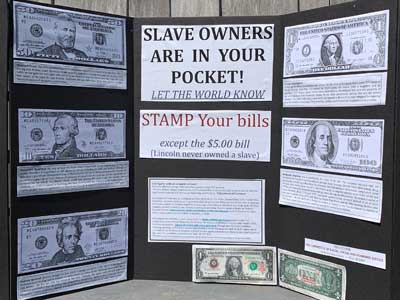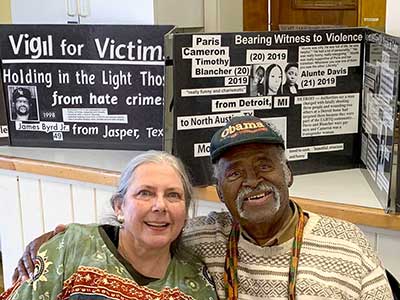by David Rosen | January 2021
When recalling Lincoln, many New Yorkers may remember the famous speech he gave at Cooper Institute (aka Cooper Union) in February 1860 calling to limit the extension – but not the end – of slavery. It was a critical campaign speech that helped him secure the Republican Party nomination for President. In November, he was elected, and, in December, South Carolina was the first state to secede from the Union.
Unfortunately, few American – and likely very few New Yorkers – will recall that Lincoln’s speech was strongly attacked by city business leaders and the Democratic Party, many assailing him with the racist slogan, “Black Republican.” More important, Lincoln’s election sparked a strong movement in the city, led by Mayor Fernando Wood, to join the South and secede from the Union. This is one of the many important historical stories retold in an informative new book by Jonathan Daniel Wells, The Kidnapping Club: Wall Street, Slavery and Resistance on the Eve of the Civil War (Bold Type Books). Slavery was formally abolished in New York State in 1827, but the slave trade lived on in the city until the Civil War. Wells argues that the slave trade persisted in New York City in the decades before the Civil War because it was the capital of the Southern slave economy.
TAGS: [Strategies] [2020’s] [History] [Civil War] [Slavery] [Politics] [Social Justice] [Policing] [Black Lives Matter] [Justice System] [White Supremacy] [White Culture] [Silencing POC] [Racial Terrorism] [Social Justice]
*Paywall Alert
by Douglas Haynes | February 2021
Last month’s violent insurrection at the US Capitol overshadowed the re-introduction of H.R. 40 on January 4, 2021. Introduced by Rep. Shelia Jackson Lee (D-Texas), this bill provides for funding for a commission to study and develop reparation proposals for African Americans. The two events could not be more different. One was a violent assault on the US Congress by extremists. The other reflected the deliberate law-making process of a modern democracy. In seeking to de-certify the votes of millions of Americans, the protestors sought nothing less than the restoration of white supremacy in the slogans “Make America Great Again” or “Take Back Our Country.” By contrast, the co-sponsors of the House bill called on the federal government to finally come to terms with the costs and consequences of the legal enslavement and differential treatment of Black people in both the past and present.
TAGS: [Strategies] [2020’s] [Reparations] [White Supremacy] [White Culture] [White Privilege] [Systemic Racism] [Black Lives Matter] [Social Justice] [Definitions] [Slavery] [Politics] [History]
by Anna Deavere Smith | February 2021
This article is part of “Inheritance,” a project about American history and Black life.
In 1968, history found us at a small women’s college, forging our Black identity and empowering our defiance. I knew nothing about the multitude of small colleges across the U.S. that had been founded, many by religious institutions, for the specific purpose of educating white women. Nor did I know anything about “suitcase schools,” some of which had reputations as glorified finishing schools where girls were focused on meeting boys attending nearby institutions. (They were called “suitcase schools” because on Fridays the girls took off to spend the weekend with their prospective husbands.) But in 1966, as my counselor put it to my mother, many of these all-girls colleges were “looking for nice Negro girls like Anna.” My father did not like the idea. He was adamant that I attend Howard or Morgan State or some other historically Black college or university, just as he and his siblings and my older cousins had done. My mother and I made our case about “opportunity.” He became emphatic: If I went to a white women’s college, he said, I’d have no social life. This was a legitimate concern—but up to that point, my father’s strictness had severely circumscribed my “social life.” Now he was suddenly concerned about it?
TAGS: [Strategies] [2020’s] [History] [Systemic Racism] [Black Lives Matter] [-ing While Black] [White Privilege] [White Culture] [Policing] [Social Justice] [Assumptions]
by Erin Blakemore | September 2019
When Eugene Burnett saw the neat tract houses of Levittown, New York, he knew he wanted to buy one. It was 1949, and he was ready to settle down in a larger home with his family. The newly established Long Island suburb seemed like the perfect place to begin their postwar life—one that, he hoped, would be improved with the help of the GI Bill, a piece of sweeping legislation aimed at helping World War II veterans like Burnett prosper after the war. But when he spoke with a salesman about buying the house using a GI Bill-guaranteed mortgage, the door to suburban life in Levittown slammed firmly in his face. The suburb wasn’t open to Black residents.
TAGS: [Strategies] [2010’s] [Systemic Racism] [Racial Covenants] [Black Lives Matter] [Economics] [White Privilege] [White Culture] [White Supremacy] [Denial] [Housing] [Politics] [History] [Social Justice]
by Jared Brown | Month Unknown 2016
In 1871, Congress authorized banks to provide business loans and mortgages. Paradoxically, such mortgages and loans were usually administered to whites at the expense of black depositors. Risky investments and lending patterns, coupled with cronyism and corruption at the level of upper management, slowly undermined the stability of the bank. According to Black Past, “By 1874, massive fraud among upper management and among the board of director had taken its toll on the bank. Moreover, economic instability brought upon by the Panic of 1873, coupled with the bank’s rapid expansion, proved disastrous.” The Freedmen’s Bank was officially closed on June 29, 1874. At the point of closing, 61,144 black depositors were robbed of the modern equivalent of $66 million. The failure of the bank left many black depositors and borrowers distrustful of the white banking community, especially since the Freedmen’s Bank was established and managed by white men.
TAGS: [Strategies] [2010’s] [Systemic Racism] [History] [White Supremacy] [White Culture] [White Privilege] [Slavery] [Accountability] [Social Justice] [Economics] [Denial] [Racial Covenants] [Black Lives Matter]
by Farida Dawkins | February 2018
… there was a time when black women weren’t allowed to display their hair in public. Keep reading to learn about the Tignon Laws and how it was used to fuel racial tensions in the United States. A tignon (tiyon) is a headdress used to conceal hair. It was adorned by free and slave Creole women of African ancestry in Louisiana in 1786. The sumptuary law was enacted under Governor Esteban Rodriguez Miró. The regulation was meant as a means to regulate the style of dress and appearance for people of color. Black women’s features often attracted male white, French, and Spanish suitors and their beauty was a perceived threat to white women. The tignon law was a tactic used to combat the men pursuing and engaging in affairs with Creole women. Simply put, black women competed too openly with white women by dressing elegantly and possessing note-worth beauty.
TAGS: [Strategies] [2010’s] [Systemic Racism] [Silencing POC] [Black Lives Matter] [Definitions] [Denial] [White Supremacy] [White Privilege] [Slavery] [History]

















